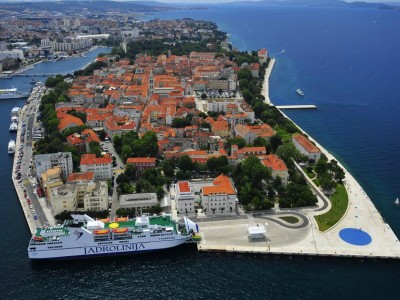ZADAR
ZADAR
The northern coast of Dalmatia, crossed by the Adriatic Sea from Italy, is a treasure trove of seaside resorts and dramatic landscapes where mountains meet water. Cruise ship ports offer access to beaches, parks, offshore islands, tours for a gentle adventure, and insights into the cultures of the western Balkan peninsula. Many travelers have heard of Croatia's famous Dalmatian port of Dubrovnik, which appears on many cruise itineraries between Venice and Athens. Not nearly as many cruisers have spent a day in Zadar. Zadar is a treasure trove of ruins and ancient churches that sit at the center of a pleasant, comfortable and functional city. It is an easy town to explore, just a short walk from the cruising dock in the center of town. The streets of the old town are clean and its historical sites are intriguing reminders of Zadar's tumultuous past. Yes, this city has suffered. It began when the Romans decided they wanted Zadar, which led to 200 years of warfare to subdue the locals, in the 1st century BC. The Venetians subsequently conquered Zadar several times, but the city pulled them out, only to fall to the Austrians. The Italians ruled Zadar again, followed by the French and then the Nazis during World War II, which meant bombs from the West until the Germans and much of Zadar were destroyed. The city then became part of Yugoslavia until that government collapsed. The city was evacuated by Serb forces from 1991 to 1993, cutting Zadar off from mainland help. The city remained in precarious shape until 1995. Today the area has an energetic atmosphere, thanks mainly to the young people of the local college. For visitors, Zadar offers two special places: a marine organ that plays music from the mastery of wind and waves, and the outdoor Forum, where you can sip, tick, and tsup - that's checking in with your friends by cell phone to find out what's going on - while sitting in the ruins of a real Roman Forum in the shadows of a 9th-century church.
